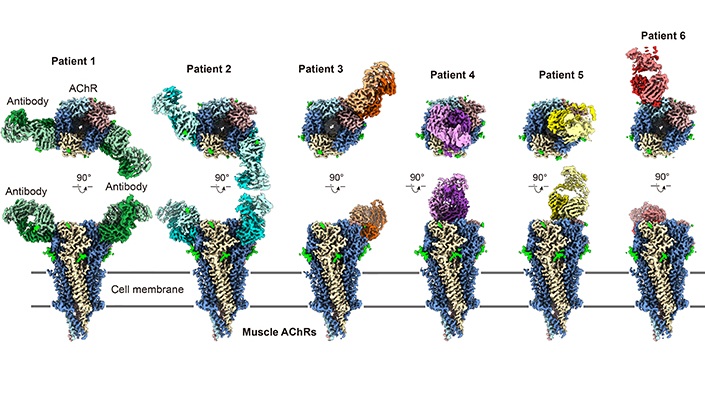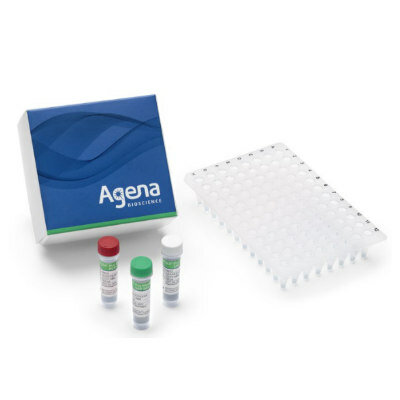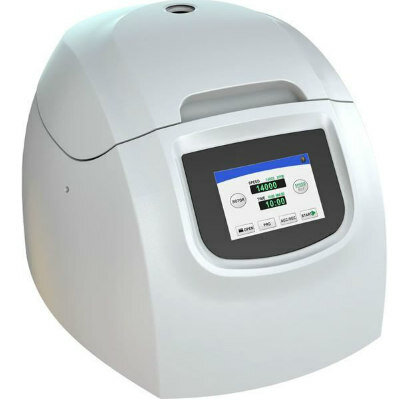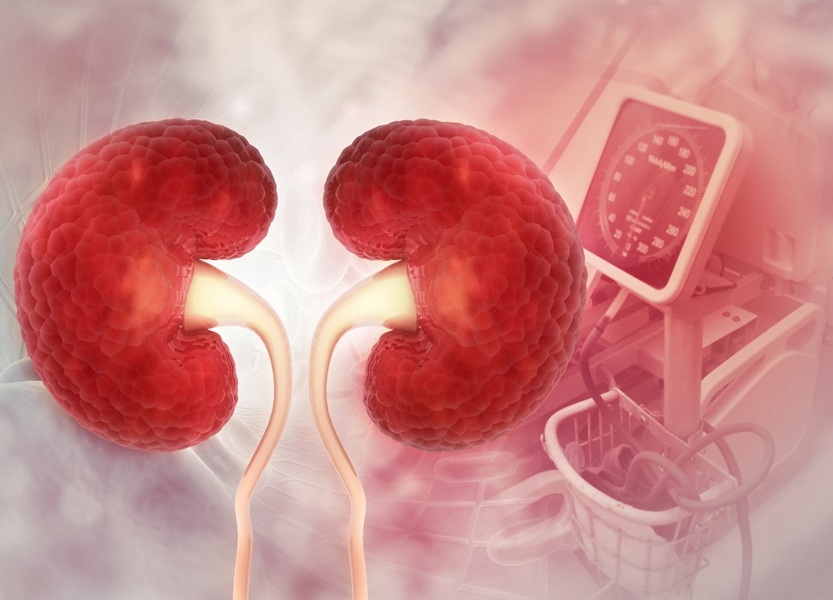RNA-Based Blood Test Detects Preeclampsia Risk Months Before Symptoms
|
By LabMedica International staff writers Posted on 11 Apr 2025 |

Preeclampsia remains a major cause of maternal morbidity and mortality, as well as preterm births. Despite current guidelines that aim to identify pregnant women at increased risk of preeclampsia using general maternal characteristics, the incidence of the disease has nearly doubled over the last decade, now affecting 1 in 12 pregnancies. Currently, fewer than 50% of high-risk patients adhere to recommended interventions, such as daily aspirin, even though these have been shown to be beneficial. Once a patient shows symptoms, the situation becomes urgent as efforts focus on delivering the baby safely without compromising the mother’s health. Thus, there is an increasing need for better tools to pinpoint those patients at truly high risk. A breakthrough study recently published in Nature Communications has shed new light on the biological understanding of hypertensive disorders of pregnancy (HDP), including preeclampsia.
The study, which analyzed data from over 9,000 pregnancies in the multi-center Miracle of Life prospective study sponsored by Mirvie (South San Francisco, CA, USA), discovered and validated RNA signatures that could distinguish between severe and mild hypertensive disorders, including preeclampsia, months before symptoms arise. The findings also confirm the predictive capability of Mirvie’s simple blood test for identifying preeclampsia early, between 17.5 and 22 weeks of gestation, in pregnancies that do not have any pre-existing high-risk conditions. The test uses RNA signatures to resolve any ambiguity in determining whether a pregnancy is truly at high risk, thereby allowing healthcare providers to focus on the 1 in 4 pregnancies that require heightened attention. The results of this study show that relying on molecular signals from the underlying biology is a more accurate method for identifying high or low risk for preeclampsia.
Validation results from the study reveal that the blood test can identify 91% of pregnancies that will develop preterm preeclampsia in women over the age of 35, without pre-existing high-risk conditions, months before symptoms appear. Furthermore, those who receive a low-risk result have a 99.7% likelihood of not developing preterm preeclampsia. These new insights contribute to the growing body of evidence supporting the use of Mirvie's RNA platform for predicting pregnancy complications well in advance. This clinically validated blood test, branded as Encompass, will soon be widely available. By offering a simple blood test during the early second trimester, healthcare providers and expectant mothers can implement evidence-based prevention strategies months before symptoms manifest, ultimately improving the chances of a full-term pregnancy and a healthy delivery.
“Current guidelines are not helping us identify which patients are truly at high risk and we need better tools,” said Dr. Kara Rood, a maternal-fetal medicine physician, one of the principal investigators of the study, and Clinical Associate Professor of Obstetrics and Gynecology at The Ohio State University Wexner Medical Center. “Mirvie’s preeclampsia risk prediction test can now improve risk assessment, helping women and their care teams be informed and take actions with the potential to delay onset or prevent the disease.”
“Importantly, these results demonstrate for the first time the unique molecular signatures that distinguish between severe and mild hypertensive disorders of pregnancy, giving us confidence in a much more precise and personalized approach for at-risk pregnancies,” added Dr. Thomas McElrath, vice president of clinical development at Mirvie and a maternal-fetal medicine physician at Brigham and Women’s Hospital.
Related Links:
Mirvie
Latest Molecular Diagnostics News
- First Of Its Kind Test Uses microRNAs to Predict Toxicity from Cancer Therapy
- Novel Cell-Based Assay Provides Sensitive and Specific Autoantibody Detection in Demyelination
- Novel Point-of-Care Technology Delivers Accurate HIV Results in Minutes
- Blood Test Rules Out Future Dementia Risk
- D-Dimer Testing Can Identify Patients at Higher Risk of Pulmonary Embolism
- New Biomarkers to Improve Early Detection and Monitoring of Kidney Injury
- Chemiluminescence Immunoassays Support Diagnosis of Alzheimer’s Disease
- Blood Test Identifies Multiple Biomarkers for Rapid Diagnosis of Spinal Cord Injury
- Highly Accurate Blood Test Diagnoses Alzheimer’s and Measures Dementia Progression
- Simple DNA PCR-Based Lab Test to Enable Personalized Treatment of Bacterial Vaginosis
- Rapid Diagnostic Test to Halt Mother-To-Child Hepatitis B Transmission
- Simple Urine Test Could Help Patients Avoid Invasive Scans for Kidney Cancer
- New Bowel Cancer Blood Test to Improve Early Detection
- Refined Test Improves Parkinson’s Disease Diagnosis
- New Method Rapidly Diagnoses CVD Risk Via Molecular Blood Screening
- Blood Test Shows Promise for Early Detection of Dementia
Channels
Clinical Chemistry
view channel
Carbon Nanotubes Help Build Highly Accurate Sensors for Continuous Health Monitoring
Current sensors can measure various health indicators, such as blood glucose levels, in the body. However, there is a need to develop more accurate and sensitive sensor materials that can detect lower... Read more
Paper-Based Device Boosts HIV Test Accuracy from Dried Blood Samples
In regions where access to clinics for routine blood tests presents financial and logistical obstacles, HIV patients are increasingly able to collect and send a drop of blood using paper-based devices... Read moreHematology
view channel
New Scoring System Predicts Risk of Developing Cancer from Common Blood Disorder
Clonal cytopenia of undetermined significance (CCUS) is a blood disorder commonly found in older adults, characterized by mutations in blood cells and a low blood count, but without any obvious cause or... Read more
Non-Invasive Prenatal Test for Fetal RhD Status Demonstrates 100% Accuracy
In the United States, approximately 15% of pregnant individuals are RhD-negative. However, in about 40% of these cases, the fetus is also RhD-negative, making the administration of RhoGAM unnecessary.... Read moreImmunology
view channel
Stem Cell Test Predicts Treatment Outcome for Patients with Platinum-Resistant Ovarian Cancer
Epithelial ovarian cancer frequently responds to chemotherapy initially, but eventually, the tumor develops resistance to the therapy, leading to regrowth. This resistance is partially due to the activation... Read more
Machine Learning-Enabled Blood Test Predicts Immunotherapy Response in Lymphoma Patients
Chimeric antigen receptor (CAR) T-cell therapy has emerged as one of the most promising recent developments in the treatment of blood cancers. However, over half of non-Hodgkin lymphoma (NHL) patients... Read moreMicrobiology
view channel
Handheld Device Deliver Low-Cost TB Results in Less Than One Hour
Tuberculosis (TB) remains the deadliest infectious disease globally, affecting an estimated 10 million people annually. In 2021, about 4.2 million TB cases went undiagnosed or unreported, mainly due to... Read more
New AI-Based Method Improves Diagnosis of Drug-Resistant Infections
Drug-resistant infections, particularly those caused by deadly bacteria like tuberculosis and staphylococcus, are rapidly emerging as a global health emergency. These infections are more difficult to treat,... Read more
Breakthrough Diagnostic Technology Identifies Bacterial Infections with Almost 100% Accuracy within Three Hours
Rapid and precise identification of pathogenic microbes in patient samples is essential for the effective treatment of acute infectious diseases, such as sepsis. The fluorescence in situ hybridization... Read morePathology
view channel
Advanced Imaging Reveals Mechanisms Causing Autoimmune Disease
Myasthenia gravis, an autoimmune disease, leads to muscle weakness that can affect a range of muscles, including those needed for basic actions like blinking, smiling, or moving. Researchers have long... Read more
AI Model Effectively Predicts Patient Outcomes in Common Lung Cancer Type
Lung adenocarcinoma, the most common form of non-small cell lung cancer (NSCLC), typically adopts one of six distinct growth patterns, often combining multiple patterns within a single tumor.... Read moreTechnology
view channel
Pain-On-A-Chip Microfluidic Device Determines Types of Chronic Pain from Blood Samples
Chronic pain is a widespread condition that remains difficult to manage, and existing clinical methods for its treatment rely largely on self-reporting, which can be subjective and especially problematic... Read more
Innovative, Label-Free Ratiometric Fluorosensor Enables More Sensitive Viral RNA Detection
Viruses present a major global health risk, as demonstrated by recent pandemics, making early detection and identification essential for preventing new outbreaks. While traditional detection methods are... Read moreIndustry
view channel
Cepheid and Oxford Nanopore Technologies Partner on Advancing Automated Sequencing-Based Solutions
Cepheid (Sunnyvale, CA, USA), a leading molecular diagnostics company, and Oxford Nanopore Technologies (Oxford, UK), the company behind a new generation of sequencing-based molecular analysis technologies,... Read more
Grifols and Tecan’s IBL Collaborate on Advanced Biomarker Panels
Grifols (Barcelona, Spain), one of the world’s leading producers of plasma-derived medicines and innovative diagnostic solutions, is expanding its offer in clinical diagnostics through a strategic partnership... Read more























